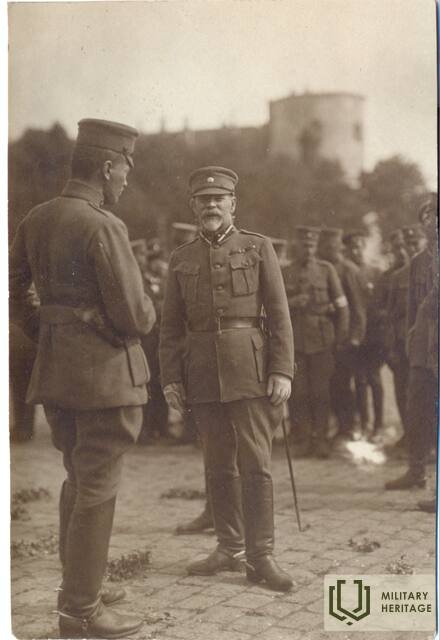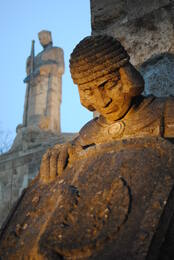Dāvidas Sīmansonas (1859–1933), Latvijos armijos vyriausiasis vadas, gynybos ministras, generolas
I WW1, I Nepriklausomybės karai

Dāvidas (taip pat Dāvis) Sīmansonsas gimė 1859 m. kovo 23 d. (dabar balandžio 4 d.) Valmieros parapijos Pīlātu pusdvaryje. Jis baigė Limbažių rajono mokyklą. 1880 m. savanoriu įstojo į 115-ąjį Viazmos pėstininkų pulką. 1882 m. baigė pėstininkų junkerių mokyklą Rygoje. Mokėsi Generalinio štabo akademijoje Sankt Peterburge. Dalyvavo Rusijos-Japonijos kare. Nuo 1910 m. buvo pulkininkas. 1912 m. balandžio mėn. buvo paskirtas 66-ojo pėstininkų pulko vadu. Nuo 1914 m. dalyvavo Pirmojo pasaulinio karo mūšiuose prieš vokiečių armiją Lenkijos, Lietuvos ir Latvijos teritorijose. 1915 m., 1917 m. gegužę, buvo paaukštintas generolu majoru ir paskirtas 17-osios pėstininkų divizijos 2-osios brigados vadu. Jam buvo įteikti Stanislavo I III klasės, Anos III klasės, Vladimiro III IV klasės ordinai ir Šv. Jurgio ordino kardas. Iš tarnybos pasitraukė 1917 m. spalį. Iki 1919 m. sausio gyveno Vitebske ir Oriole. Į Rygą grįžo 1919 m. sausio 8 d.
D. Sīmansonsas įstojo į Latvijos kariuomenę 1919 m. birželio 6 d., o nuo liepos 10 d. buvo vyriausiasis armijos vadas. Nuo liepos 15 d. iki rugsėjo 10 d. jis buvo saugumo ministras. Spalio 16 d. jis buvo atleistas iš vyriausiojo vado pareigų. 1919 m. vasarą D. Sīmansonsas ėmėsi formuoti Latvijos armiją iš skirtingo pobūdžio ir formos dalinių, neturinčių pakankamo aprūpinimo ir saugumo, bendros karinės ir politinės sumaišties sąlygomis, kai Laikinoji vyriausybė tik iš dalies išlaisvintoje šalyje pradėjo organizuoti valstybės aparatą, kuriam trukdė daugybė vidinių ir išorinių priešų. Šioje sudėtingoje situacijoje jam taip pat teko atlikti diplomatines funkcijas santykiuose su užsienio misijomis ir vadovauti išorės ginkluotosioms pajėgoms, spręsti Vokietijos landesvero reorganizavimo į Latvijos armijos dalinį klausimą ir kitas. Jis sėkmingai įvykdė savo užduotis, padėdamas organizacinius ir struktūrinius Latvijos armijos pamatus.
Už protingus ir energingus veiksmus Bermonto puolimo metu 1919 m. spalio 9–10 d. Dāvidui Sīmansonui 1926 m. buvo įteiktas Lačplėšio karo ordino trečiasis laipsnis.
Nuo 1920 m. gruodžio mėn. jis buvo Gynybos ministerijos tarybos narys (nuo 1922 m. – Karo ministerijos). 1924 m. jis buvo paskirtas laikinai einančiu Karo ministerijos tarybos pirmininku. 1925 m. vasarį D. Sīmansonsas dėl ligos buvo atleistas iš armijos. Dāvids Sīmansonsas mirė 1933 m. sausio 13 d. Palaidotas Rygoje, Brāļu kapinėse.
2014 m. Limbažiuose, prie buvusios rajono mokyklos, buvo atidengta Deivido Simonsono atminimo lenta (skulptorius Jānis Strupulis).
Daugiau informacijos šaltinių
Erikas Jēkabsonas. Davidas Simonsonas. – Nacionalinė enciklopedija: https://enciklopedija.lv/skirklis/29934-D%C4%81vids-S%C4%ABmansons
Lāčplėsio karo ordino kavalieriaus Davido Sīmansono biografija: http://lkok.com/detail1.asp?ID=1402
Susijusi laiko juosta
Susijusios vietos
Brolių kapinės Rygoje
Rygos brolių kapinės yra šiauriniame Rygos rajone. Kapinės užima 9 ha plotą ir yra iškiliausias bei reikšmingiausias memorialinis ansamblis Latvijoje, skirtas žuvusiems Latvijos kariams. Čia palaidota apie 3000 karių. Brolių kapinės buvo įkurtos Pirmojo pasaulinio karo metu, palaidojus pirmuosius tris Latvijos šaulius, žuvusius Tyrelio purve mūšyje prieš vokiečių armiją. Vėliau Brolių kapinėse taip pat buvo palaidoti Latvijos kariai, žuvę kituose mūšiuose ir karuose. Memorialas sukurtas pagal skulptoriaus Kārlio Zālės projektą ir yra pirmasis memorialinis ansamblis Europoje, turintis tokią kraštovaizdžio, architektūros ir skulptūrinę vertę. Jame naudojami Latvijos kraštovaizdžiui būdingi elementai, tradicinės sodybos, Latvijos folkloras ir istorija, kurie giria karių savybes ir pasakoja apie kario kelią. Memorialas buvo atidengtas 1936 m. ir jį sudaro trys dalys: „Minties kelias“ – 250 m ilgio alėja, „Didvyrių terasa“ su Šventosios liepsnos aukuru ir Šventosios ąžuolyno ansambliu bei laidojimo vieta su Latvijos siena ir motinos su žuvusiais sūnumis memorialu.
Susijusi istorija
Apie pirmąjį Latvijos armijos vyriausiąjį vadą Dāvidą Sīmansoną
Knygos „Latvijos armijos vadai“ esė įtikina, kad istorijai didelę įtaką daro konkretūs asmenys. Nors svarbiausių istorinių įvykių epicentre jie buvo trumpą laiką, tikri Latvijos patriotai, turėdami didelę karinę patirtį, sugebėjo daug nuveikti formuojant ir stiprinant Latvijos kariuomenę bei istorinių įvykių lūžio taškuose.
Ši istorija yra apie pirmąjį Latvijos armijos vyriausiąjį vadą Dāvidą Sīmansoną (1859–1933).






